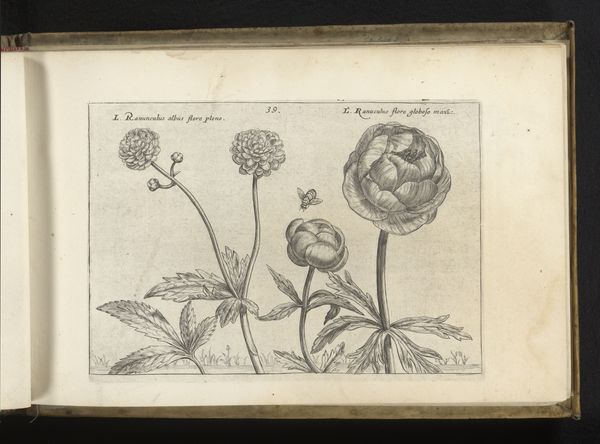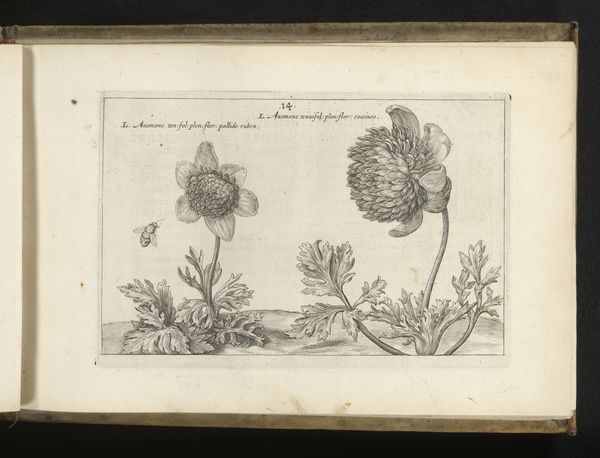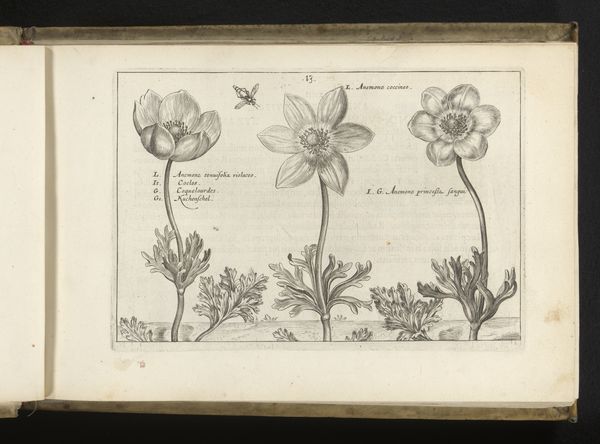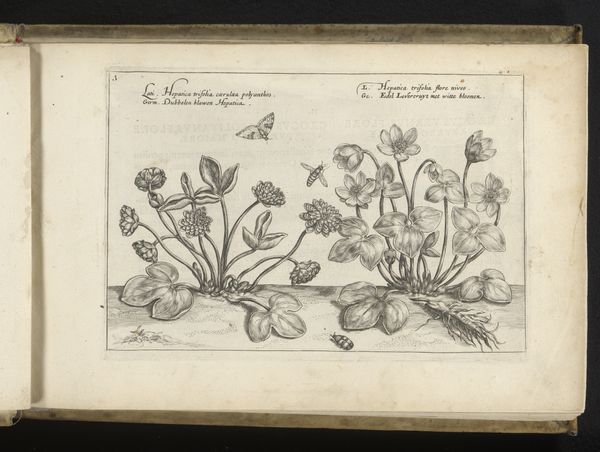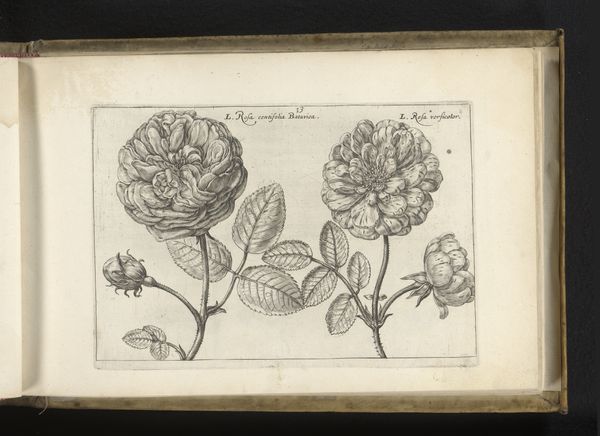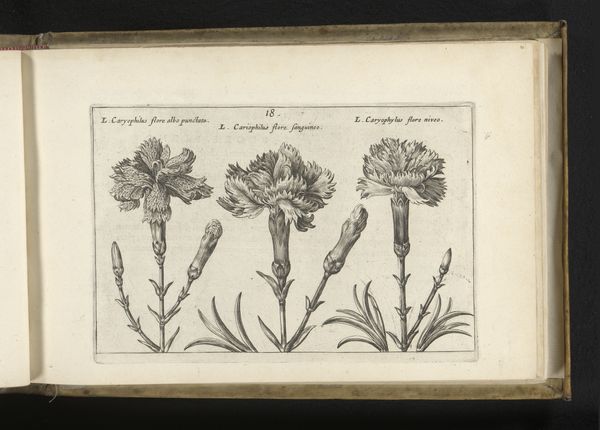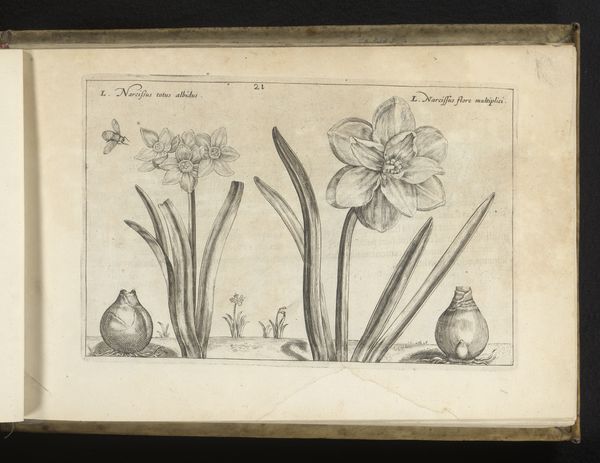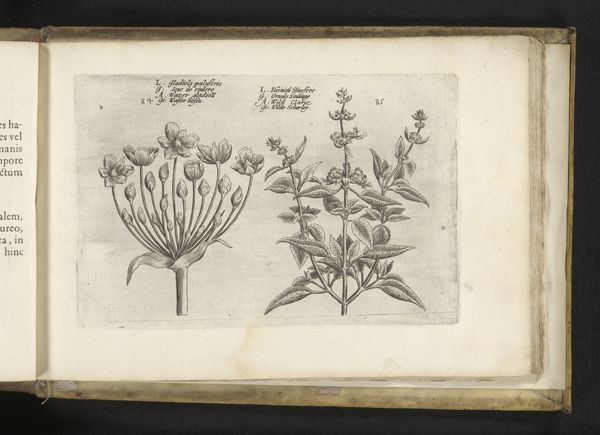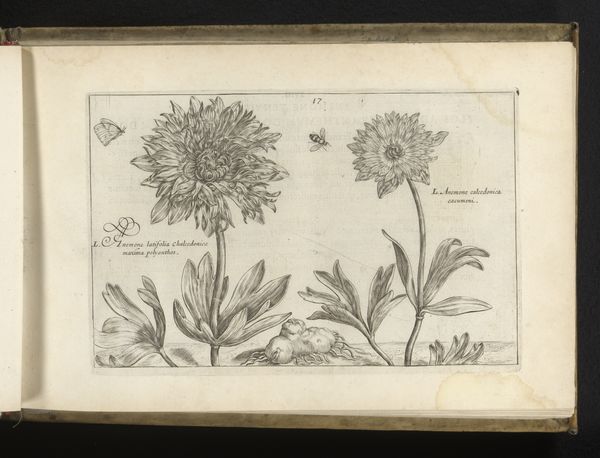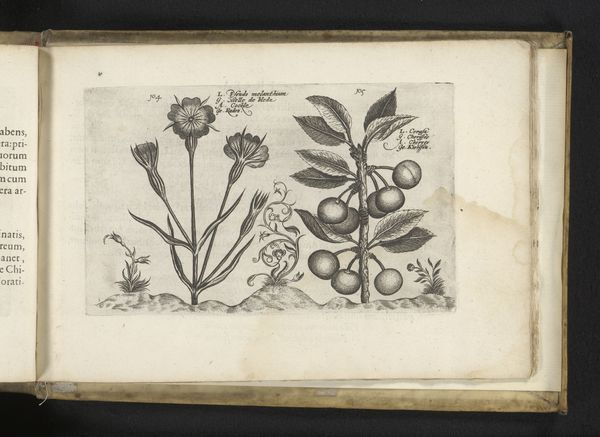
print, engraving
#
aged paper
#
toned paper
#
dutch-golden-age
#
ink paper printed
# print
#
sketch book
#
flower
#
personal sketchbook
#
pen-ink sketch
#
pen and pencil
#
line
#
pen work
#
sketchbook drawing
#
sketchbook art
#
engraving
#
realism
Dimensions: height 147 mm, width 210 mm
Copyright: Rijks Museum: Open Domain
Crispijn van de Passe the Younger made this print of a buttercup and another kind of ranunculus sometime before his death in 1670, using engraving. Look closely and you'll see that the image is built up from thousands of tiny etched lines, giving a sense of light and shadow to the botanical forms. The artist would have used a tool called a burin to carve these lines directly into a copper plate. This was an incredibly skilled and labor-intensive process. Consider the social context: in the 17th century, there was a huge demand for botanical illustrations, driven by scientific discovery and a growing interest in the natural world. Prints like this one allowed knowledge to be disseminated widely and relatively cheaply, a crucial part of the burgeoning information economy. By focusing on the meticulous craft of printmaking, we can appreciate not only the beauty of the image but also the broader cultural forces that shaped its creation. This challenges any idea that we might have that art is somehow separate from everyday life and labor.
Comments
No comments
Be the first to comment and join the conversation on the ultimate creative platform.
